|
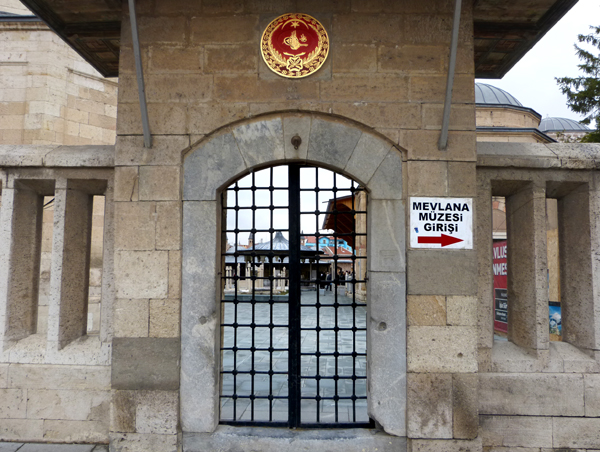
Arriving and a peek
into the court yard at the Mevlana Museum,
one of Türkeys greatest and most revered attractions
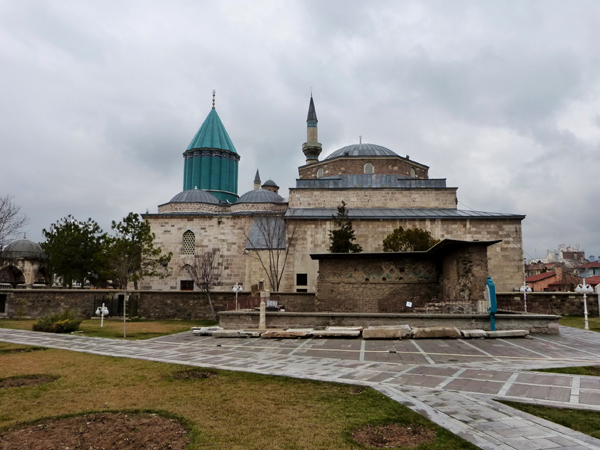
The Mevlevi Museum seen towards north.
|
Brief history of the museum |
|
The Mevlana Museum,
located in Konya, Anatolia, Turkey, is the mausoleum of
Jalal ad-Din Muhammad
Rumi, the Persian Sufi mystic also known as Mevlana or Rumi. It was
also the dervish lodge (Tekke) of the Mevlevi order, known as
the Whirling dervishes.
The Seljuk sultan, who
had invited Mevlana to Konya, offered his rose garden as a fitting
place to bury Baha ad-Din Walad, the father of Mevlana, when he died
on 12. january 1231. When Mevlana died, on 17 December 1273 he was
buried next to his father.
Mevlana's successor
Celebi decided to build a mausoleum over the grave of his Master. The
turquoise tiled dome was finished 1274.
Several sections
were added over the centuries until 1854.
A decree of 6 April
1926 confirmed that the mausoleums and the dervish lodges were to be
turned into a museum. The museum opened on 2 March 1927 and in 1954
it was given the name, "Mevlana Museum". |
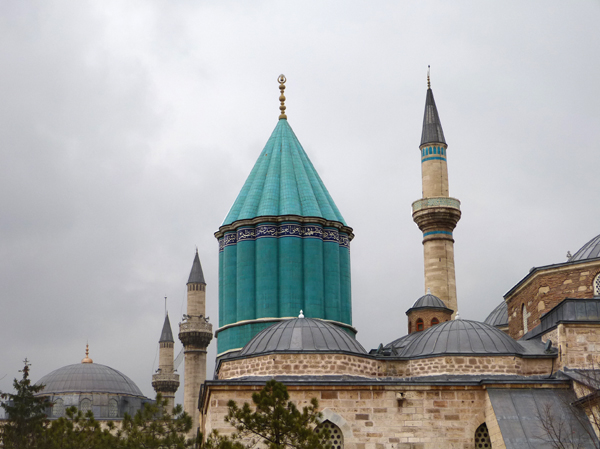
The turquise tiled
tower covering Mevlana Rumi's grave.
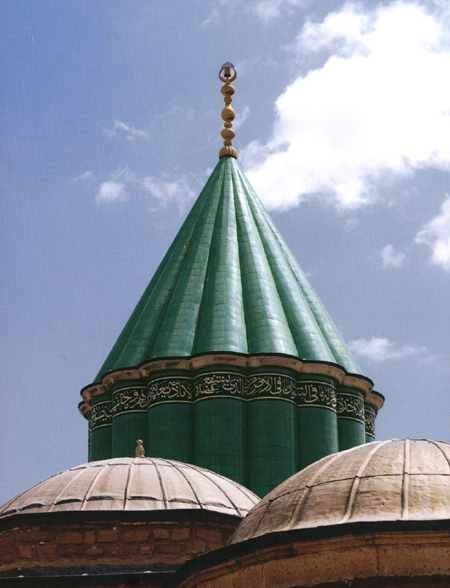
Mevlana Rumis turquise
tiled mausolaeum from 1274.
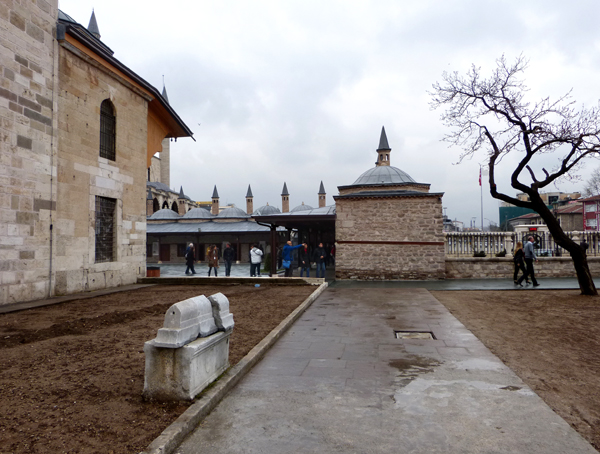
Path to the court yard.
the monk (Mevlevias) cells are seen in the back.
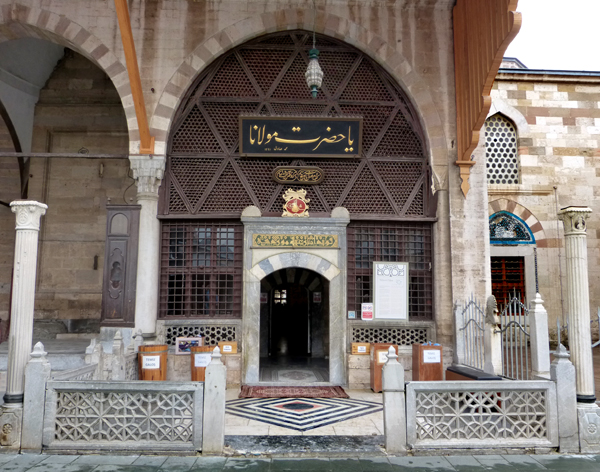
The entrance to the
Tilavet, the holy room where the Mevlevis dervishes chanted the Qur'an.
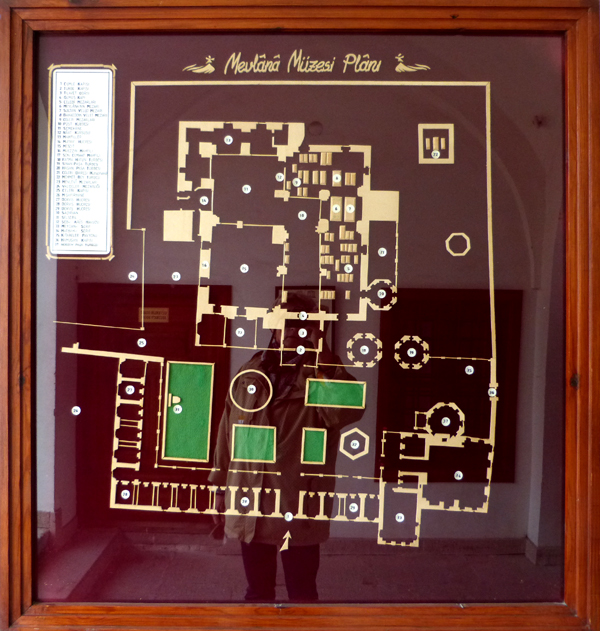
The North is
the left side, east up, west down
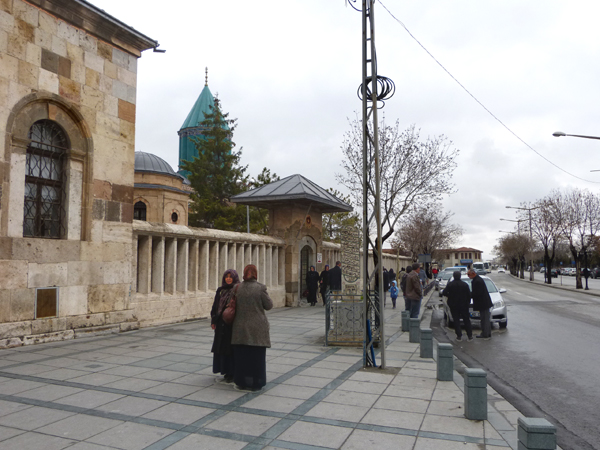
Leaving the Mevlevi
Museum, one of Türkeys greatest attractions on Aslani Kisla road
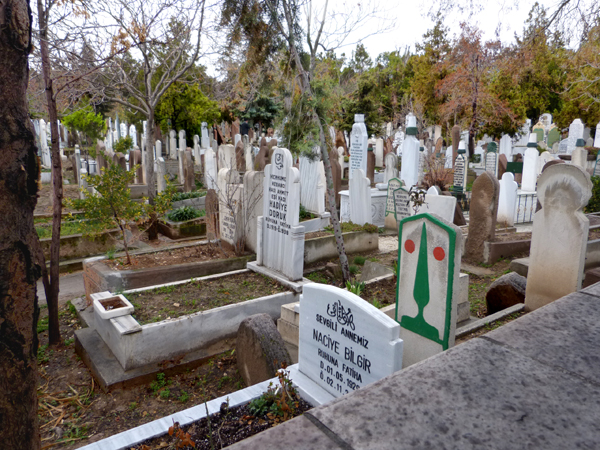
Burial ground opposite
the Mevlana Museum.
Believers are resting along the Aslani Kisla road.
The head stones are facing the holy ground of the Mevlevis.
|